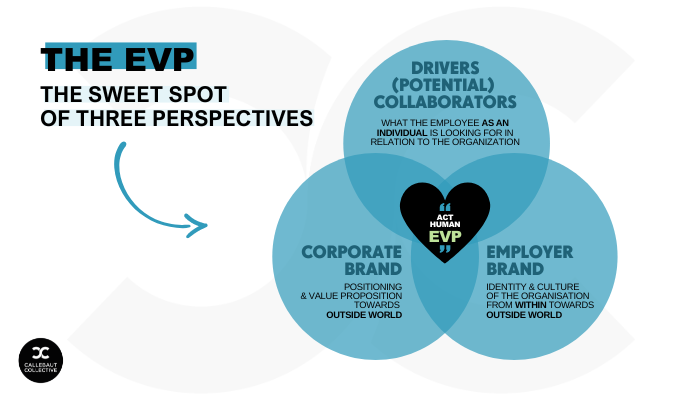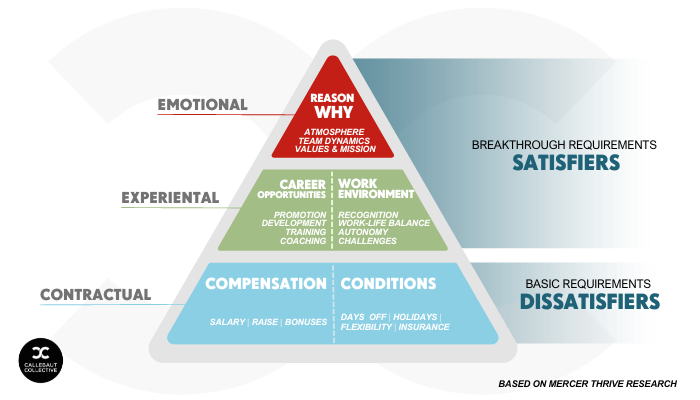09.05.23

09.05.23

In article #1, we already indicated the importance of an employer branding strategy; now let’s look at how to develop it correctly. An important role within your employer branding strategy, perhaps the most important, is the Employee Value Proposition, or EVP. As the basis of positioning your organization as an attractive employer, the EVP brings together what you offer your employees and what makes you unique in doing so. So no strong employer brand without an EVP. That is why we would like to explain what an EVP is, how it is structured and how you can define it for your organization.
Your EVP is unique to your company, and aligned with various dimensions of your organization. Therefore, the first step in defining your EVP is to identify, understand and ultimately bring together three crucial perspectives:

In other words, defining your EVP is not just an isolated exercise, but arises from your corporate brand, and subsequently your employer brand. In addition, it aims to provide a fundamental answer to what drives your employees on a daily basis. By finding the sweet spot of these three dimensions, you can achieve a strong and sustainable EVP.
How to do that? You can start by taking a closer look to the three dimensions from a critical inside-out view: gather all existing information, inputs and insights based on internal knowledge and documentation, and make a sharp analysis of them. But after that – and this is an exercise that is always relevant from an “act human” approach – it’s time to talk to and especially listen to your main stakeholder, your employees. Engage with your people, and hear what their interpretation, perception, experience towards your organization is. Important in doing so, is to consider them as ‘people’ and not merely ’employees’ – after all, you are shaping your EVP for and building a relationship with people, not employees.
Once you’ve found the sweet spot between your corporate brand, employee and employer brand perspective, you can shape your EVP more concretely. That means defining the various layers of your EVP. There are three levels you can define in a well-founded and multifaceted way to make clear what you are looking for as an organization and how employees can get meaning and satisfaction from their jobs. You can visualize this EVP structure as a pyramid.

We build the EVP as follows:
Within the three layers, we distinguish between satisfiers and dissatisfiers.
By defining all three layers, you offer your current and future employees a holistic value proposition. In doing so, you also take into account the different needs of employees, ranging from factual conditions (such as compensation) to finding an emotional connection. Again, listening to your employees and fundamentally understanding what drives (but also frustrates) them is the key here: once you have insight into that, you can use the layers of your EVP to find a comprehensive and appropriate response. Hence: act human.
So in order to arrive at your EVP, the first step is to map the three key perspectives. By bringing together the corporate brand, employee and employer brand perspectives, you can attain a valuable and consistent value proposition for your employees. With that input in your possession, it’s then a matter of filling in the layers of the pyramid.
Throughout the entire process of determining your EVP, the following always applies: act human. Gain insights into what your employees are looking for in their relationship with your employer brand, and how you can make the difference by providing a meaningful response.
Next step after defining your EVP, is to put it into words and… communicate it. How do you come up with a compelling EVP message and which channels do you bring when to your potential and current employees? Read more here: From strategy to communication: From strategy to communication: how to translate your EVP into a comprehensive message.